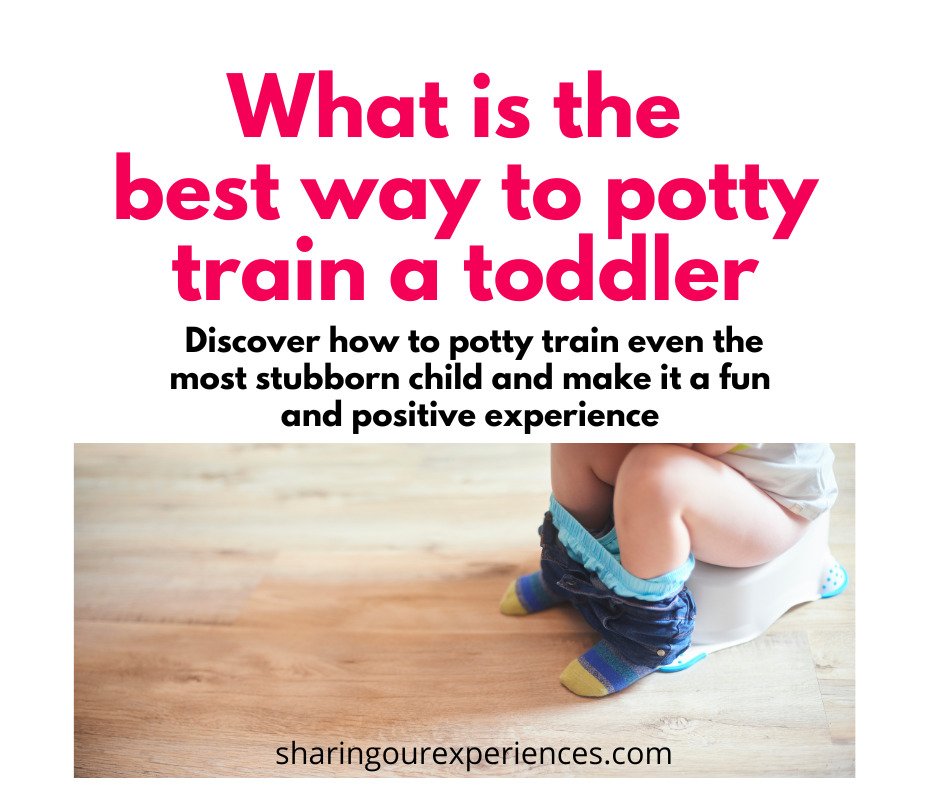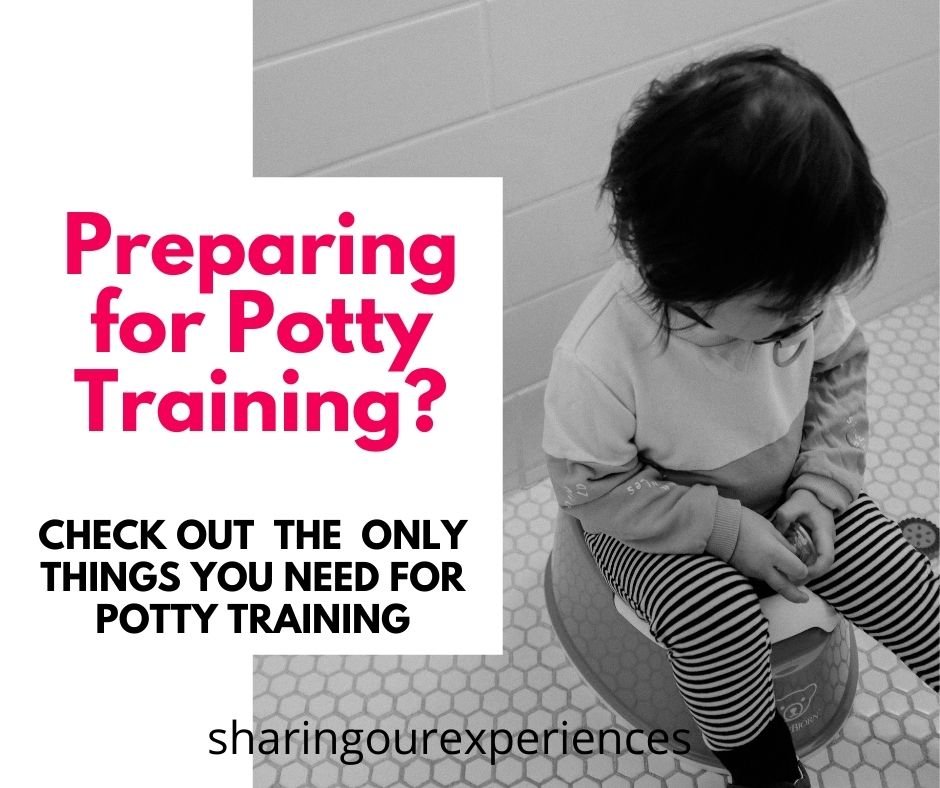
Learn the best tips, practices, and products to make the process a success with our comprehensive guide. Discover how to potty train even the most stubborn child and make it a fun and positive experience. Get started today!”
Potty training can be an exciting yet challenging time for both parents and toddlers. As a parent, you may be eager to see your little one make the transition from diapers to using the toilet, but the process can also be nerve-wracking.
You want to make sure you’re doing everything you can to help your child succeed. If you’re feeling overwhelmed, don’t worry! You’re not alone. In this article, we’ll explore the best ways to potty train your toddler, so you can feel confident and equipped as you navigate this exciting milestone together.
Whether your child is just starting to show interest in the toilet or you’ve already begun the potty training process, this guide will provide you with all the information and support you need to ensure success.
So, buckle up and get ready to embark on this adventure with your little one!
Let us first start with the challenges involved.
What are the challenges involved in potty training?
Potty training can be challenging for both parents and children and may involve the following challenges:
- Timing: Finding the right time to start potty training can be difficult. Some children may be ready as early as 18 months, while others may not be ready until they are 3 or 4 years old.
- Refusal to use the toilet: Some children may be hesitant to use the potty or may refuse to use it altogether.
- Accidents: Even with the best training and preparation, accidents are a normal part of the potty training process.
- Consistency: Establishing a consistent routine can be challenging, especially for families with busy schedules.
- Potty-training regressions: Children may make progress in their potty training and then suddenly stop using the toilet altogether. This can be frustrating for parents.
- Dealing with setbacks: Potty training can be a slow process, and setbacks can be discouraging for both parent and child.
- Maintaining consistency: Maintaining the child’s use of the toilet once they have been trained can also be a challenge.
However, with patience, understanding, and the right approach, these challenges can be overcome and potty training can be a positive and successful experience for both parent and child.
Also Read – What is the best way to potty train a toddler
Signs that your toddler is ready for potty training
Here are some signs that indicate that your toddler may be ready for potty training:
- Physical signs: Your toddler may start staying dry for longer periods, or may express an interest in using the toilet.
- Behavioral signs: Your toddler may hide to use the bathroom, imitate others using the toilet, or express discomfort when wearing a dirty diaper.
- Increased independence: Your toddler may show an increased desire for independence and control over their body.
- Understanding of bathroom-related language: Your toddler may understand and respond to bathroom-related language, such as “potty,” “toilet,” or “pee-pee.”
- Ability to follow simple instructions: Your toddler should be able to follow simple instructions, such as pulling down their pants or sitting on the potty.
- Motor skills: Your toddler should have the motor skills necessary to use the potty, such as the ability to climb up onto the potty and sit down.
Remember, every child is different and may be ready for potty training at a different age or pace. It’s important to watch for signs that your child is ready and to approach potty training with patience and understanding.
Best Practices for Potty Training
Here are some best practices for potty training your toddler:
- Start when your child is ready: It’s important to start potty training when your child is ready, both physically and emotionally. Watch for signs that your child is ready, such as staying dry for longer periods or expressing interest in using the toilet.
- Use positive reinforcement: Encourage your child by using positive reinforcement, such as praise, stickers, or small treats.
- Make it a fun and relaxed experience: Try to make potty training a fun and relaxed experience for your child by using books, songs, or other activities to engage them.
- Establish a routine: Establish a consistent routine for using the potty, such as taking your child to the bathroom at regular intervals.
- Provide clear instructions: Provide clear and simple instructions for using the potty, such as pulling down pants and underwear, sitting on the potty, and wiping after using the bathroom.
- Be patient: Potty training can take time, so it’s important to be patient and understanding with your child. Don’t force or pressure them, as this can lead to frustration and setbacks.
- Allow for accidents: Accidents are a normal part of the potty training process, so it’s important to be understanding and allow for them.
- Encourage independence: Encourage your child to take an active role in the potty training process by allowing them to choose their own underwear, or participate in the clean-up after accidents.
- Celebrate successes: Celebrate your child’s successes, no matter how small, and continue to provide positive reinforcement throughout the potty training process.
By following these best practices, you can help make potty training a positive and successful experience for both you and your child.
Products that can help you with Potty training
Here are some products that can help with potty training:
- Potty chairs: Potty chairs are designed specifically for young children and are a good option for those who are just starting potty training. They come in a variety of sizes and styles, and some even play music or have other features to make the experience more enjoyable for children.
- Potty seats: Potty seats can be placed on top of an adult toilet to make it easier for children to use. Some come with built-in step stools to help children reach the seat.
- Training pants: Training pants are a good option for children who are almost fully potty trained, but still have occasional accidents. They are designed to hold small amounts of urine, but can also be pulled down like regular underwear.
- Step stools: Step stools can help children reach the toilet or sink more easily. Some step stools even have built-in potty seats for added convenience.
- Potty training books and videos: Potty training books and videos can help make the process more fun and engaging for children. They often feature characters that children can relate to and can help explain the potty training process in a way that children can understand.
- Potty training reward charts: Reward charts can help motivate children during potty training. Children can earn stickers or other rewards for successfully using the bathroom, which can help keep them motivated and on track.
- Travel potty seats: Travel potty seats can be useful for families who are on the go and need to use public restrooms. They are lightweight and portable, making it easy to take them with you wherever you go.
These products can help make the potty training process easier and more enjoyable for both you and your child. Choose the ones that best fit your child’s needs and preferences.
Also Read – How to Potty Train your Toddler- toilet training essentials you need to buy
What is the 3 day potty training method?
The 3 day potty training method is a fast-paced approach to potty training that aims to have a child fully trained within just three days. The method involves having the child spend the majority of their time naked, so they can feel the discomfort of having an accident and quickly learn to associate using the bathroom with relief. The child is taken to the bathroom every hour or so, and any accidents are cleaned up immediately without punishment or criticism.
The method relies on consistent and intensive effort from the parent and is intended for children who are physically ready for potty training. It’s important to note that every child is different, and what works for one child may not work for another. Potty training is a big step, and it’s important to approach it with patience and understanding, tailoring the approach to suit your child’s individual needs and personality.
How does the 3 day potty training method work
The 3 day potty training method works by establishing a consistent routine for using the bathroom and creating a positive, reward-based environment for the child. Here’s how the method works:
- Preparation: Before starting the 3 day potty training method, make sure your child is physically ready for potty training and willing to participate. Gather all the necessary supplies, such as a potty, underwear, and wipes.
- Going Naked: On the first day, have your child spend the majority of their time naked. This allows them to feel the discomfort of having an accident and quickly learn to associate using the bathroom with relief.
- Frequent trips to the bathroom: Take your child to the bathroom every hour or so, and encourage them to try and go. Be patient, and don’t force or pressure them.
- Positive Reinforcement: Give your child praise and rewards for successful trips to the bathroom. This can include stickers, small treats, or special privileges.
- Consistent Routine: Establish a consistent routine for using the bathroom, such as taking your child to the bathroom at regular intervals, or after meals and drinks.
- Clean up immediately: If your child has an accident, clean it up immediately without punishment or criticism. This helps them learn that accidents are a normal part of the potty training process.
- Gradual transition to underwear: As your child becomes more comfortable using the bathroom, gradually transition them to wearing underwear. This can take anywhere from a few days to a week or more, depending on your child’s progress.
By following this routine consistently over the course of three days, many parents have found success with the 3 day potty training method. However, it’s important to remember that every child is different.
What age should a child be fully potty trained?
Most children are fully potty trained by the age of 3 to 4 years old. However, the age at which a child becomes fully potty trained can vary greatly, and can be influenced by a number of factors such as their developmental readiness, physical ability, and personal temperament.
Some children may be fully potty trained as early as 18 months, while others may not be fully trained until they are 4 or 5 years old. It’s important to remember that every child is different, and there is no set timeline for potty training. Potty training should be approached with patience and understanding, tailoring the approach to suit your child’s individual needs and personality.
How can I potty train my 2 year old?
Potty training a 2 year old can be a big milestone for both the child and the parent. Here are some tips to help make the process as smooth as possible:
- Check if your child is ready: Before starting potty training, make sure your child is physically ready and willing to participate. Look for signs that your child is ready, such as showing interest in the potty, staying dry for longer periods, or expressing a desire to use the bathroom.
- Make it fun: Make the process of potty training fun and positive for your child. You can use rewards, such as stickers or small treats, to encourage success. You can also involve your child in the process by allowing them to choose their own potty and underwear.
- Establish a routine: Establish a consistent routine for using the bathroom, such as taking your child to the bathroom at regular intervals, or after meals and drinks.
- Gradually transition to underwear: Start by having your child wear underwear during short periods of time, and gradually increase the length of time they spend in underwear as they become more comfortable using the bathroom.
- Be patient: Potty training is a big step for your child, and it’s important to approach it with patience and understanding. It’s normal for accidents to happen, and it’s important not to criticize or punish your child for them.
- Encourage independence: Encourage your child to be as independent as possible when using the bathroom. This can include allowing them to pull their own pants down, or allowing them to clean up any accidents themselves.
How do you potty train a stubborn child?
Potty training a stubborn child can be challenging, but with patience and persistence, it can be done. Here are some tips that can help:
- Be patient: Potty training can be a slow process, especially for children who are more stubborn or resistant. Avoid getting frustrated and be patient with your child.
- Use positive reinforcement: Offer praise, stickers, or small treats when your child uses the potty successfully. This will help reinforce positive behavior and make potty training a more enjoyable experience.
- Give choices: Give your child choices and let them feel in control of the process. For example, let them choose their own potty or underwear.
- Make it a fun activity: Potty training can be made into a fun and interactive activity. Use songs, books, or toys to make the process more enjoyable for your child.
- Set realistic goals: Set realistic goals for your child and celebrate their successes, no matter how small. This will help build their confidence and motivate them to continue.
- Avoid punishment: Avoid punishing or punishing your child for accidents, as this can make them feel embarrassed or ashamed and may lead to resistance. Instead, simply clean up any accidents and move on.
- Seek professional help: If you are struggling to potty train your stubborn child, consider seeking the advice of a pediatrician, child psychologist, or potty training specialist.
Potty training can be a challenging experience, but with patience and persistence, you can help your child make the transition successfully.
In conclusion, potty training is a big milestone for both children and parents. It can be challenging, especially for stubborn children, but with patience, persistence, and the right approach, it can be a positive and successful experience. Whether it’s through positive reinforcement, giving choices, making it a fun activity, or seeking professional help, it’s important to find what works best for your child. Remember to be patient and celebrate each success, no matter how small. Potty training is a journey, and with the right tools and support, your child will soon be a pro at using the bathroom independently.
So keep up the good work, and enjoy the ride.





